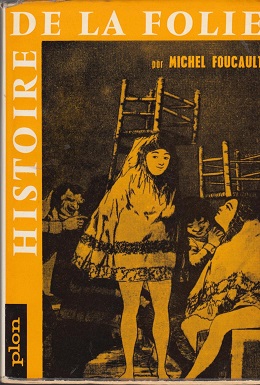Back to “Michel Foucault” Homepage
Foucault’s Theories of Discourse and Power
Michel Foucault displays to anyone who learns about him just how interconnected social systems are with each other.
To begin to understand his work, what better place to start than with a concept reflected in most of his publications?
Foucault’s concept of discourse examines just how much power words and conversation have. For Foucault, discourse isn’t what you and I could merely think of as having a discussion, but rather the consequences of the discussion.
Foucault defines discourse as speech, writing, or thought that institutionalizes ideas and shapes the world as we know it.
Let’s give an example of this concept. Here, I’ll illustrate “discourse” as a series of events, using the seemingly mundane example of bicycle safety. We can think of how discourse shapes this case in three ways:
- Prior to “Discourse” – The reality before the conversation about social norms/expectations starts.
- “Discourse” – When the conversation begins and gains traction.
- Following “Discourse” – How the discursive event (re)shapes these social norms/expectations and imposes them upon society.
Let’s see what these phases can look like with regard to bicycle safety:
| Prior to “Discourse” | “Discourse” * | Following “Discourse” |
(Image source: Canva) | “Biking at night when drivers can’t see you is really dangerous” – Concerned Citizen Article published in some local newspaper, with the headline: “Shadowed Bicyclist meets a Shadowy End” Commercial plays on TV – a car dealership shows a son crying about his mother biking home after work in the evenings, worried about her safety. The narrator emphasizes their brand as one that promotes safety for everyone on the road. (*All are fictitious examples.) | Virginia Bicycle Law: “At night, bicycles must be equipped with a front white headlight visible from 500 feet and a rear reflector visible from 600 feet. When operating on a highway with a speed limit greater than 35 miles per hour (mph), bicyclists must have a rear red tail light visible from a distance of at least 500 feet.” |
Prior to the discourse about bike safety, we have one type of reality: the dangers of biking at night on streets that are frequented by cars. Then, we have examples of discourse that reinforce the idea that bicycling at night is dangerous. Finally, we see how that discourse is translated into concrete law.
It’s kind of like cause-and-effect, isn’t it? As conversation sparks around the dangers of biking in the dark, this concern becomes entrenched in society and results in a law being passed, showing how the worries of everyday citizens can manifest into societal expectations and repercussions if this safety measure isn’t followed.
Something to keep in mind is that anyone can “use” discourse to shape societal expectations, and so perspective can help influence output (as in the bicycle example, where concerns about safety become safety regulations). This example might not be profoundly socially meaningful to everyone (although bicycle safety definitely keeps us safe!), but think about how the power of discourse could apply to cases that are particularly important to you!
The concept of “discourse” across Foucault’s work
We can see this idea of discourse across a lot of Foucault’s large body of work, including the following publications.
Madness and Civilization (1961)
Madness and Civilization is Foucault’s commentary on the so-called strides medical practitioners made in studying “madness,” where the label of being mentally ill or sick grew to replace the idea of insanity prescribed to “madness” earlier on.
Foucault challenges how society is organized around the concept of the “mad.” Following how earlier periods of letting the “mad” roam free progressed to forming institutions that “treated” so-called “mad” patients, Foucault describes how these institutions (e.g., hospitals) were created out of fear in a time period where reason was highly valued and mental illness was thought of as immoral.
Rather than pushing forward an ethic of care, Foucault argues that these institutions were organized around the segregation and isolation of the “mad,” all under the watchful eye of overseers who pushed for conformity.
In short, the discourse of the “mad” as immoral resulted in repression of those experiencing mental illness.
Watch the following video if you’d like more information!
Discipline and Punish (1975)
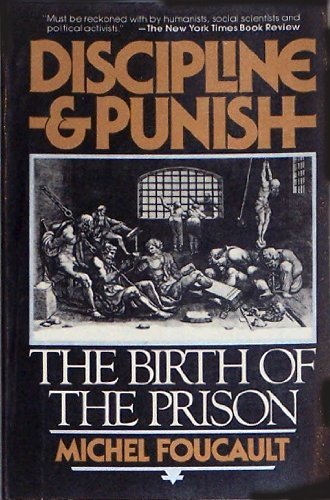
Discipline and Punish dives into Foucault’s observations on how power has been implemented in society over time.
For a long period of time, a sovereign usually exhibited and exercised power over society. This was one person or body whose will was often displayed publicly, linearly, and in some cases, violently. Think of public floggings or trials!
However, in the past few centuries, sovereign power has shifted to disciplinary power, where instead of one figure monitoring people and society, society and people surveil and discipline themselves through systems of organization and belief.
Back in the day, how were criminals punished? Often killed or tortured, right?
You would think, then, that imprisonment is more fair and humane. However, Discipline and Punish describes how the move to imprisoning criminals is, rather than an act of benevolence, a way of exhibiting disciplinary power.
A good example of disciplinary power doesn’t have to be quite so large-scale as the prison system! Even normalizing a routine like the 9am–5pm workday is a form of societal discipline. (Take the next few minutes to think of other examples and put them below in the comments!)
It’s interesting to think about how this discourse around behavior makes it seem off-putting (and consequential!) when someone deviates from it. For example, if you go to a school that doesn’t allow students to wear hats and you show up wearing a baseball cap, you’ll not only face administrative repercussions, but also quizzical looks from your classmates as well!
The History of Sexuality (1976–2018)
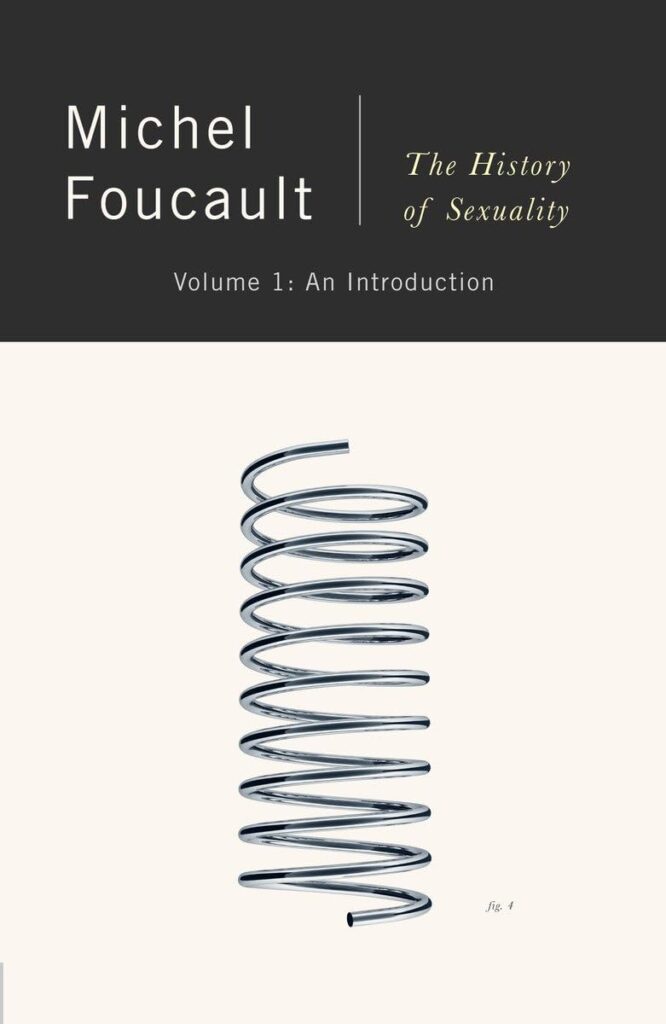
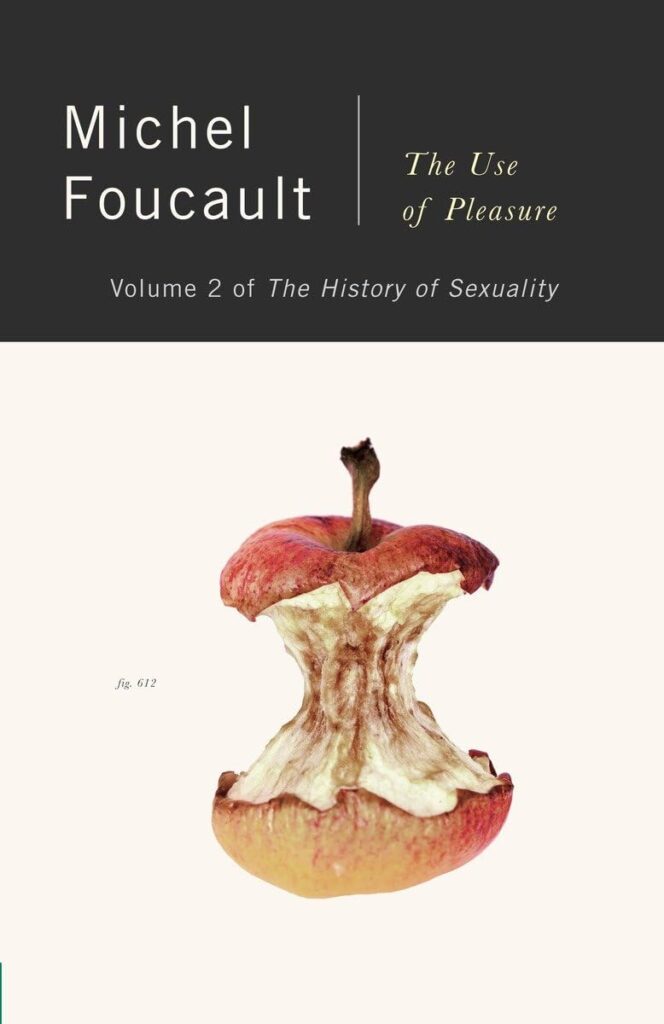
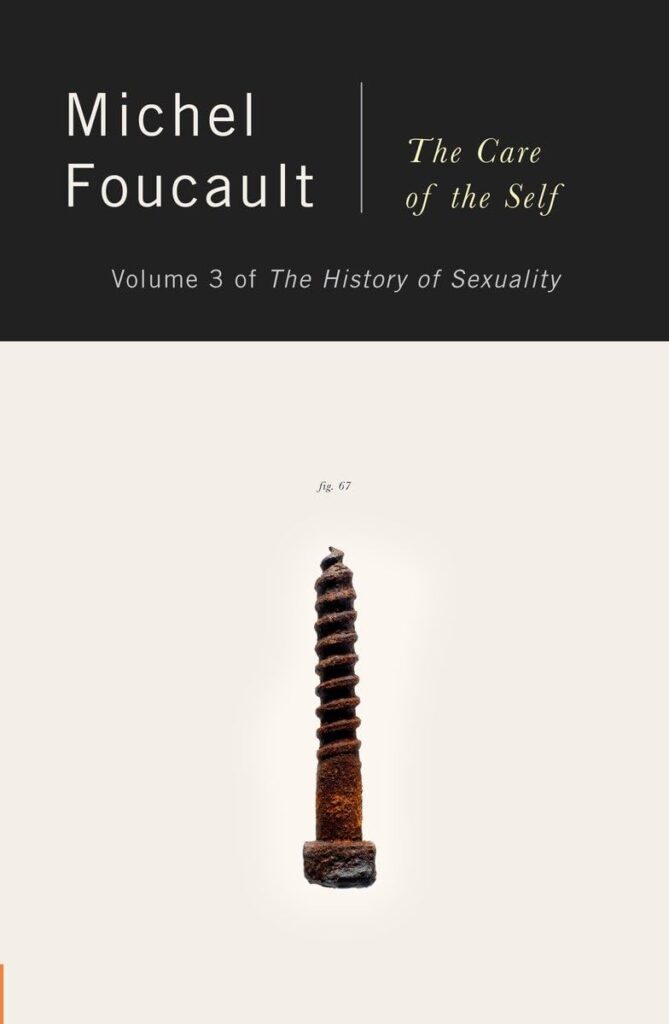


In The History of Sexuality (published in four volumes between 1976 and 2018), Foucault contests what he names the “repressive hypothesis”: the suggestion that discussion of sexuality has been and continues to be taboo from the 17th–20th century by means of repressive power.
However, Foucault argues that power isn’t necessarily repressive, but manifests in various forms—and in this discussion, sexuality hasn’t been repressed, but instead explored.
For example, while some have tried to fit discourses of sex into something purely scientific, or sinful, or clinical, these attempts to categorize sex within strict boundaries have inadvertently sparked varied ideas about sexuality, as restrictive discourses place the conversation in the eye of the public and give space for a wide variety of discourses to grow.
This dynamic is what Foucault calls power/knowledge: the notion that just as those with power use discourse to shape what is considered to be “knowledge,” those who lay claim to “correct” knowledge can also give themselves more power. It’s not just the cut-and-dry idea that “knowledge is power.”
To understand this dynamic, let’s take another look at the bicycle example from earlier.
Carter School PhD candidate and urban peacebuilding expert Ashton Rohmer puts forward a new term that could shape our understanding of this case: “car supremacy,” where cars have come to reorganize American society by being given a concerning level of individuality, almost as if cars themselves are people. As she writes:
Cars are a convenient vehicle (no pun intended) for our idea of individualism – we might pick their colors to match our personality, cover them in bumper stickers that profess all of our likes and dislikes, and adorn them with decorations ranging from holiday decor to sports paraphernalia, and even human features like giant eyelashes (as well as insulting symbols like Confederate flags). This spirit of individualism extends beyond ourselves – sometimes our cars are given their own identities (I used to have a car named Lola so I’m guilty of this, too) and in the most absurd cases, sometimes they are personified and promoted to such an extent that they can garner bigger social media followings than actual humans 🙄.
Thus, when it comes to discourses around bicycle safety, bicycles—and bicyclists—are often seen as bearing the responsibility for road safety. These assumptions in turn affect the knowledge we can have about this concerning issue.
But how could what we hear about bicycle safety change if both types of vehicles were placed on more equal footing?
Foucault’s approach to theory-building
While the above publications all deal with the concepts of discourse and power in some capacity, Foucault uses different frameworks to approach these issues. The shift in these frameworks demonstrates the development in his thinking over time.
Prior to Discipline and Punish, Foucault primarily used an archeological, or more methodical-based approach for how he discussed change over time. This approach is seen in Madness and Civilization.
However, Discipline and Punish is largely understood as the beginning to his genealogical, or more analytical-based approach. This is the approach he followed in his later writings. Archeology seems to be more of a comment on phenomena, while genealogy seems to understand how said phenomena work in real life.
While I was trying to understand the difference between the two, I found this video (2:58-5:30) to be really helpful.
How do you see this change showing up in Foucault’s work?
Where to Next?

A Journey into Foucault’s Ideas

Foucault and Narrative Transformation

